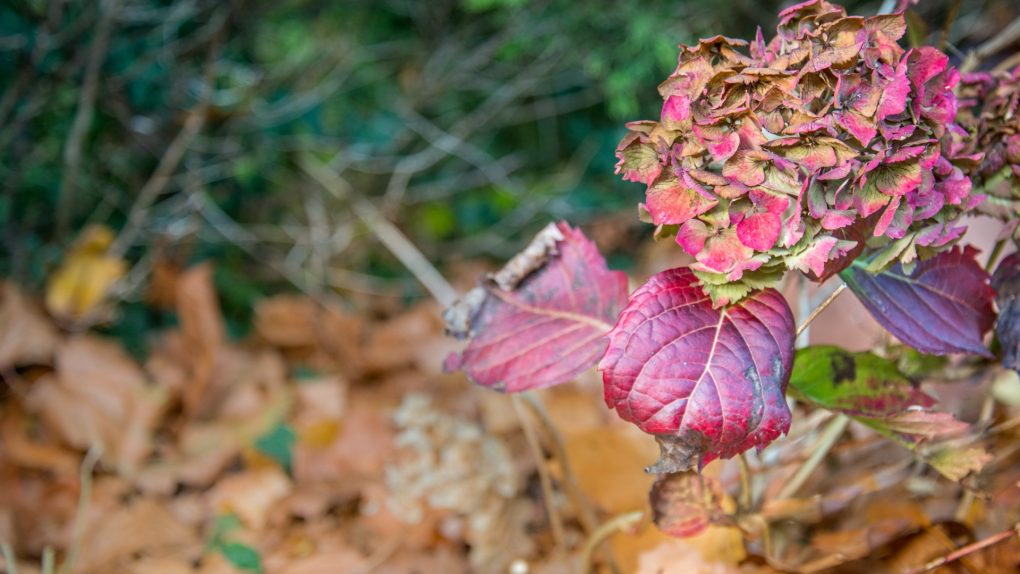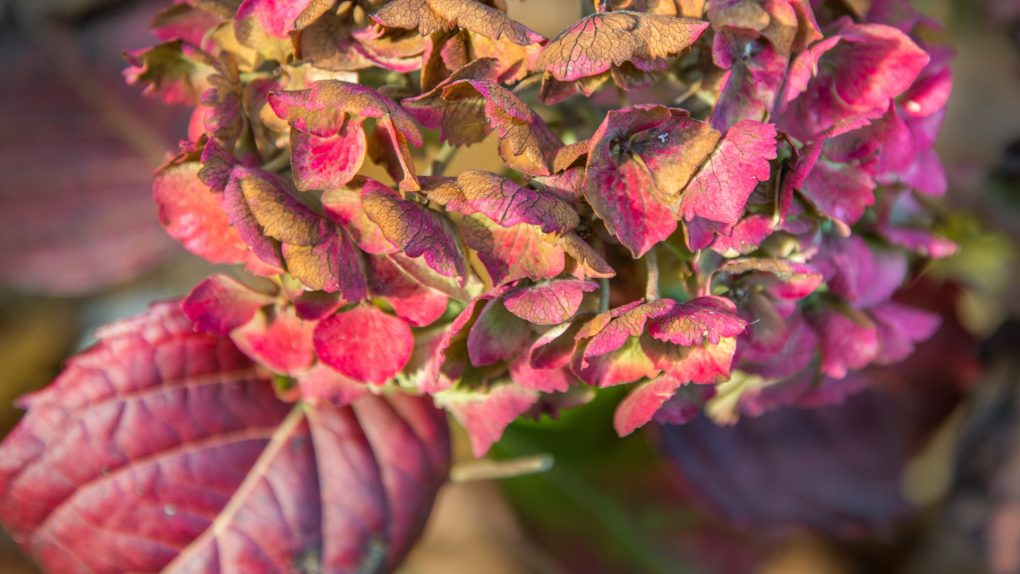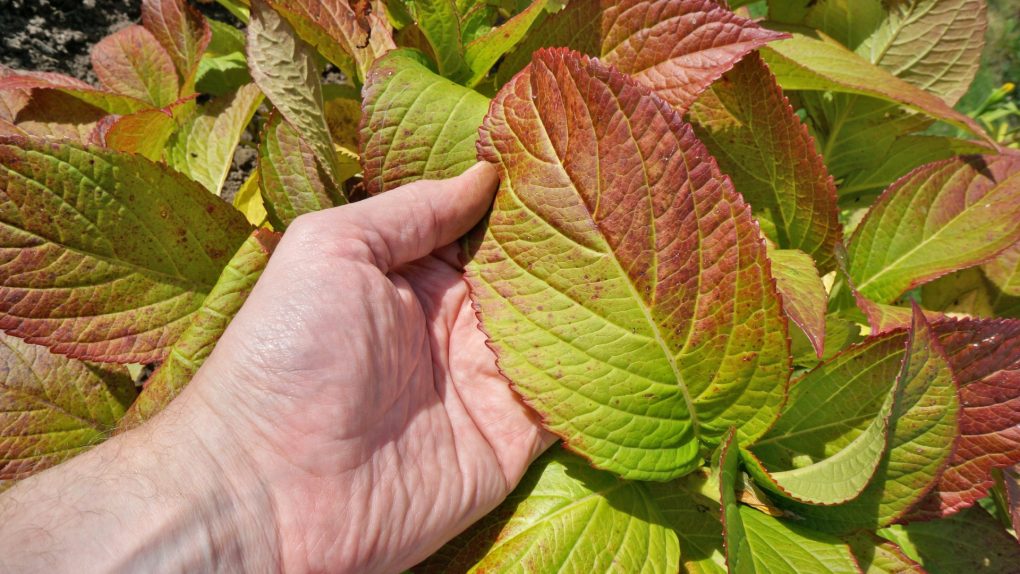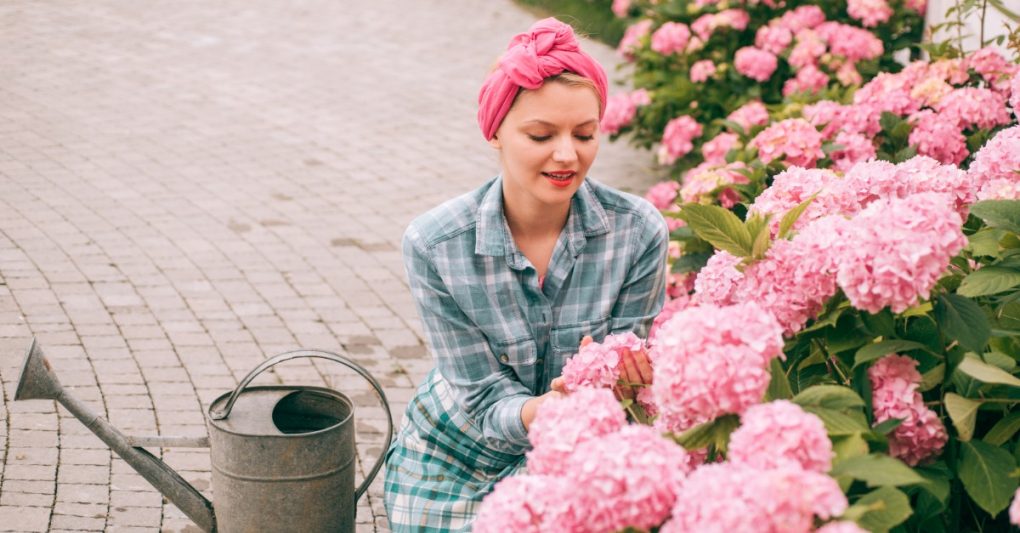Why Are My Hydrangea Leaves Curling: Understanding the Causes
If your hydrangea leaves are curling, the first thing to do is to check the soil moisture. If the soil is dry, the plant may be underwatered. On the other hand, if the soil is waterlogged, the plant may be overwatered. In addition, pests like aphids and spider mites can damage the leaves, causing them to curl. Finally, exposure to too much sunlight can also cause the leaves to curl. By identifying the problem’s cause, you can correct it and restore your hydrangea plant to health.

Table of Contents
Environmental Factors
Temperature
Hydrangeas prefer mild temperatures; extreme heat or cold can cause their leaves to curl. In hot weather, the plant may curl its leaves to conserve moisture; in cold weather, it may curl to protect itself from frost damage. To prevent curling due to temperature fluctuations, keeping the plant in a location with a consistent temperature is important.
Humidity
Hydrangeas prefer humid environments, and low humidity can cause their leaves to curl. The plant may curl its leaves to conserve moisture if the air is too dry. To prevent curling due to low humidity, keeping the plant in a location with high humidity is important. Using a humidifier or placing a tray of water near the plant can also help increase the humidity around the plant.
Light
Hydrangeas prefer partial shade and can suffer from curling if exposed to too much direct sunlight. The plant may curl its leaves in direct sunlight to protect itself from sunburn. To prevent curling due to excessive light, keeping the plant in a location with partial shade or filtered light is important. If the plant is exposed to direct sunlight, it may be necessary to provide shade with a cloth or umbrella.

Pests and Diseases
Hydrangeas are susceptible to various pests and diseases that can cause leaves to curl. Here are some common culprits:
Aphids
Aphids are small, pear-shaped insects that suck the sap out of hydrangea leaves. As a result, leaves may curl, turn yellow, and drop prematurely. Aphids are often found on the undersides of leaves and can be controlled with insecticidal soap or neem oil. Several natural predators of aphids, such as ladybugs and lacewings, can be introduced to the garden to help control the population.
Spider Mites
These tiny, spider-like creatures feed on the underside of hydrangea leaves. They can cause leaves to curl, turn yellow, and fall off the plant. An insecticidal soap or neem oil can help to control spider mites in hot, dry conditions. Increasing humidity around the plant can also help deter spider mites.
Powdery Mildew
Powdery mildew is a fungal disease that can cause leaves to curl, yellow, and drop off the plant. Leaves and stems become coated with a white, powdery coating. By providing good air circulation around plants, powdery mildew can be prevented. It thrives in warm, humid conditions. A fungicide can also be used to treat powdery mildew.
By promptly identifying and treating pests and diseases, you can help prevent hydrangea leaves from curling and keep your plants healthy and beautiful.
Nutrient Deficiencies
Hydrangeas require a balanced supply of nutrients to grow and thrive. When the plant lacks any of these nutrients, it can result in the curling of leaves. Here are some common nutrient deficiencies that can cause hydrangea leaves to curl:

Iron Deficiency
Iron is an essential nutrient for hydrangeas, and its deficiency can cause the leaves to turn yellow and curl. Iron deficiency is common in soils with a high pH level, making it difficult for the plant to absorb iron. The deficiency can be corrected by adding iron chelate to the soil or using an iron-rich fertilizer.
Magnesium Deficiency
Magnesium is another essential nutrient for hydrangeas, and its deficiency can cause the leaves to curl and turn yellow. Magnesium deficiency is common in acidic soils, and it can be corrected by adding dolomitic lime to the soil or using a magnesium-rich fertilizer.
Nitrogen Deficiency
Nitrogen is one of the three main nutrients that hydrangeas require, and its deficiency can cause the leaves to curl and turn yellow. Nitrogen deficiency can be caused by over-fertilization with phosphorus or potassium, as it can make it difficult for the plant to absorb nitrogen. To correct the deficiency, use a nitrogen-rich fertilizer or add organic matter to the soil.
It is important to note that over-fertilization can also cause nutrient imbalances, leading to leaf curling. Therefore, it is recommended to perform soil tests to determine the nutrient needs of your hydrangeas.
Watering Issues
Watering is among the most important factors in keeping hydrangeas healthy. Both overwatering and underwatering can cause the leaves to curl and wilt. Therefore, monitoring the soil moisture levels and adjusting watering accordingly is important.

Overwatering
The roots can become waterlogged if they are overwatered and suffocate, leading to root rot. This can cause the leaves to curl and turn yellow or brown. Signs of overwatering include constantly wet soil, a foul odor coming from the soil, and yellowing or wilting leaves.
To prevent overwatering, ensure the pot has good drainage and avoid watering the plant too frequently. Allow the soil to dry out slightly between waterings. If the soil feels wet, waiting a few days before watering again is better.
Underwatering
Underwatering can cause the leaves to curl and wilt as well. When the soil is too dry, the plant cannot absorb enough water to keep the leaves turgid. This can cause the leaves to curl and turn brown or crispy.
It is important to keep the soil moist, but not soggy, to avoid underwatering. Water the plant when the top inch of the soil feels dry. If the soil is dry and the leaves are wilted, thoroughly water it and move it to a cooler, shadier spot to help it recover.
